Charles (Carl) Ludwig Callies, Louise (Mina) Wilhelmine Marie Callies (Humbke) & 2 year old son (Herman) emigrate from Iowa, USA to Wetaskiwin County, Alberta, Canada.
Preamble: Researching a family history continues to amaze me! On Oct. 10, 2016 I chatted twice on the phone with Sandra Pundyk, a great-great-granddaughter of Ernst Dietrick Christian and Marie Louise Humbke (Schnepel), the sister of Ernst Humbke Sr. (my grandfather). Thus Sandra is my 2nd cousin once removed and her mother, Marion Eloise Firth (nee McShane, nee Callies), who lives in White Rock British Columbia, is my 2nd cousin. What was AMAZING was that Sandra is the first Callies blood relative I have ever talked to in 73 years. What was even MORE AMAZING was the degree of openness and trust present when I met Sandra and her husband in Edmonton. It was truly wonderful to at last establish a connection with the Callies – Humbke bloodline thru conversations with their grandchildren and great grandchildren living in BC and AB.
Minnie is buried in the Wetaskiwin cemetery next to my grandparents and her grandmother. So I have now contacted a new bloodline and already see similarities between myself and ancestors/relatives that, just the day before, I didn’t know as individuals. It is fascinating and makes the hair on the back of my neck stand on end! I feel like an explorer of old who has just discovered a new continent.
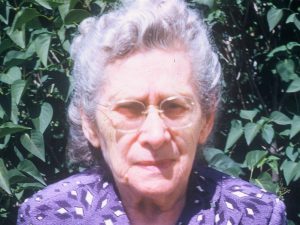
My history of the Callies family begins with the marriage of my Great Aunt, Louise “Minnie” Wilhelmine Marie Humbke to Charles “Carl” Ludwig Callies on 19 Jan. 1898 in German Valley, Hancock County, Iowa (a few miles West of the Humbke farm of Minnie’s family).
Minnie was the fifth child born on 17 Jun 1876 to Ernst Dietrick Christian Humbke and Marie Louise Humbke (Schnepel) in Windheim Village, Windheim Church District, Westphalia, Prussia. Her older brother (Ernst Sr.) was already in America, her older sister (Catherine Sophie) accompanied her, and her two previous sisters (Sophie Wilhelmine – d. 2months and Sophie Louise – d. 5 years) were buried in Windheim.
Minnie arrived in New York at age 7 aboard the SS. Neckar on 4 Aug 1883. She lived with her family at Buffalo Center, Iowa for a year; moved to the family homestead near White Lake, South Dakota for the next 7 years; and then returned with her family to a farm near Woden in 1901 where she lived until her marriage to Carl in 1898.
Carl and Minnie had their first son Hermann Dietrich Ferdinand Callies b. 09 Jan 1899 on their farm near German Valley, Kossuth County, Iowa. Hermann was to become very interested in academics and writing. Two other sons: Frederick b. Nov 1903 and Edward b. Jan 1906 also wrote about their families. One son, Carl, a twin b. 17 Jan 1915 died at 7 months and I could find little written by the 7 daughters. Minnie appears to have only spoken German among the family and I have yet to find any German correspondence from the females of the family.
Account of Carl and Minnie Callies life as written by their eldest son Herman Callies for the Treasured Memories, Gwynne and District Book – 1977 (available at 3 locations in Edmonton and in Wetaskiwin).
**********************************************************“Having heard good news about Western Canada, Carl Callies decided to move. During the winter of 1900-1901 preparation was made by selling the 91 acre farm in Iowa for forty-four dollars per acre. This money provided enough for immigration and for purchasing land.
In March the box car was loaded with two horses, a cow, a crate of chickens, hay and feed for a week, a two-horse corn cultivator, walking plow (in those days called a foo burner) a six foot binder, a high wheeled , narrow tired wagon, wagon box, shoe drill, mower, rake, six-foot disc and tools common to a farmer. When the immigrant cvar was coupled to the train, Carl Callies was enroute from Titonka, Iowa, U.S.A. to Wetaskiwin. It took four days.
Mrs. Minnie Callies and son Herman, rode in the immigrant coach. This coach contained a stove to heat and to cook on, a table, benches to sit on, water in a barrel and cooking utensil, mugs and tin dishes. Bedding was supplied by the immigrants.
Arriving on March 20, 1901 at Wetaskiwin, the train was pulled into a siding where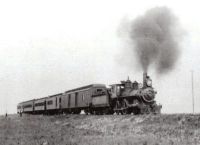 they were welcomed by the pioneers. All nature seemed to be balmy as it was the spring. The snow was all gone and the ground seemed warm and dry, except for the sloughs and creek.
they were welcomed by the pioneers. All nature seemed to be balmy as it was the spring. The snow was all gone and the ground seemed warm and dry, except for the sloughs and creek.
Unloading, application for locations, maps and directions were obtained in Wetaskiwin. They travelled ten miles south-east, fording the Battle River at what was known as the Carpenter crossing, then wen northeast for six or seven mils to open land.
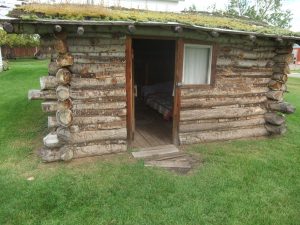
As there were no homesteads available in the area, Carl Callies bought land from the Canadian Pacific Railway and Hudson Bay companies at three dollars per acre, with a ten percent payment made. Cut lines and iron stakes indicate the boundaries. This land was located on North half section 5, township 46, range 22, W4. A two room shack 12 x 20 feet was built on some high ground near a slough. There were two windows and a door.
A well of seepage water was dug near the slough. The building of a barn followed. Some twenty acres were broken for feed oats. Hail took a toll, otherwise feed was plentiful. Another fifty acres were broken with the aid of a borrowed horse. The three horses were tethered and the cow stayed close to the home place.
In 1902 farming was the order of the day. There were some horse powered threshers in the country. They were hand fed, hand bagged and straw carrier designed. In this year Carl Callies and his brother-in-law, Dick Humbke, bought a steam threshing rig. Threshing was a winter’s job and continued in that year into the next February. It was stack threshing, chiefly oats. Charges for threshing were 1 1/4 to 1 1/2 cents per bushel of forty-bour pounds. Such names as Amos Doupe, Ernest Switzer, Tom Cherrington and J. Reimer were customers on the records of 1902-3.

Young men were eager to work on the thresher, and wages were seventy-five cents to a dollar a day.
The steamer burned straw for fuel.
In 1904 a purchase of a half section of land was made, located south of Bittern Lake and bordered the river. In 1907 this land was sold to J. Pelter for twelve work horses and cash at ten dollars per acre. With more horses, greater crop acreage was available.
In 1908, Mr Callies bought 480 acres of the land owned by the Waterous Machine Company. This was bought for nine dollars per acre. Mr. Callies was now farming about four hundred acres. He had mixed farming, grain, hogs and cattle. In the spring the hog prices hit the bottom. People were killing the young pigs and selling the dry sows for as low as two cents per pound. Mr. Callies now had about three hundred and fifty pigs, but when Gus Suys planned to kill the small pigs, Mr Callies bought ten sows for seventy dollars and got the seventy-three young pigs as a bonus.
At this time a shortage of pork was realized by the hog trade. Swift Canadian Company needed pork. Mr. Callies loaded twenty-three wagons and hauled them to Bittern Lake from where they were shipped to Edmonton. Te sold 140 heavy weight pigs at 8 1/4 cents per pound live weight which netted near $4,000.00. This paid for the 480 acres of land purchase.
In 1916 Mr Callies purchased another section of land at $7.00 per acres. He now owned seventeen quarters of land. With World War I on, prices went up and this purchase of land was paid for by 1920….
At time of writing, I (Herman) am the only one farming.”
Submitted by Herman Callies [appx. 1976] *******************************************************My father, Carl L. Callies, moved from Titonka, Iowa, U.S.A in March 1901 to Wetaskiwin, Alberta and settled on the SE1/4-8-46-22-W4. There were no roads in the country just trails. There was no place to live so Mother and Father stayed at John Reidels and Luttermans until Father built a house to live in.
Ernest and Dick Humbke came at the same time and brought three carloads of machinery and horses. Father lost three of his heavy horses from swamp fever the first year….”
Submitted by Frederick Callies [appx. 1976] *********************************************************
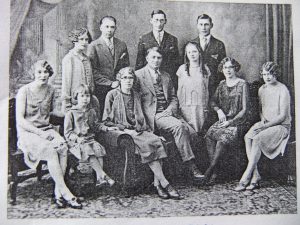
Karl Dietrich Callies (in Canada most often referred to as Charles “Carl” Ludwig Callies) was born 27 Jan 1873 in Lankow, Pommern, Prussia to Ferdinand and Paulina Callies (Dalke). At this time in history individuals often changes the spelling of their name and/or birth date, possibly to avoid being conscripted. Changing names from German to English also resulted in different spelling and to make matters more challenging the same names were used by different members of the family over the years.
Louise “Minnie” Wilhelmine Marie Humbke arrived at Ellis Island, New York in 1883 and must have been dressed in the clothes of a boy as the immigration official checked her off as being a male. Descendants describe her as being an outgoing, strong willed, hard working person. She must have been to have survived youth on homesteads in South Dakota and Iowa before moving to the unbroken Prairies of Alberta where she would have 10 children and raise 9 to adulthood from 1901 to the 1940’s.
Children of Carl and Minnie Callies
Hermann Dietrich Ferdinand Callies b. 09 Jan 1899 Woden, Iowa d. 22 May 1997 Wetaskiwin – age 98
Alvinia Louise Callies b. 26 Jan 1901 Woden, Iowa d. 06 Oct 1997 Wetaskiwin – age 96
Frederick Richard Callies b. 03 Nov 1903 Family Farm, Wetaskiwin County d. 01 Oct 1987 Wetaskiwin – age 83
Edward Otto Callies b. 16 Jun 1906 Family Farm, Wetaskiwin County d. 18 July 1987 New Norway, AB – age 81 Buried – Wetaskiwin
Ester Mary Callies b. 20 Dec 1907 Family Farm, Wetaskiwin County d. ___ 1978 Wetaskiwin – age 71
Bertha Margaret Callies b. 09 Sep 1910 Family Farm, Wetaskiwin County d. 11 Jan 1993 Wetaskiwin – age 82
Amanda “Penny” Callies b. 27 Jan 1913 Family Farm, Wetaskiwin County d. Unkown
Carl Callies (twin) b. 17 Jan 1915 Wetaskiwin Hospital d. __ Aug 1915 Wetaskiwin – age 7 months
Wilhelmina “Billie” Callies (twin) b. 17 Jan 1915 Wetaskiwin Hospital d. ___ 1941 Tranquille Hospital, Kamloops Burial – Kelowna Memorial Park
Dorothy Alverna Callies b. 18 May 1921 Family Farm, Wetaskiwin County d. Unkown
Most of the children were born at the farm home, unless otherwise stated. Dates of birth, death and location of burials will be added as they become available.
Birth Certificates, Church Records, Immigration Papers, Education Documents, Military Service, Divorces, Land Titles, Death Records and Wills all help to present an accurate picture of what happens in an individual’s life
Will of Carl L Callies
Carl’s lived a very active, energetic life and appears to have been a risk taker like myself. At one time his oldest son, Herman, indicated he had 17 quarters of land, circumstances changed, his health failed and the dirty 30’s arrived. Indications were that he could have had Multiple Sclerosis during his last years and was confined to bed. On March 15, 1932 Carl prepared his last will and 7 1/2 month later on Oct. 30, 1932 he pass away at the age of 59.
After the passage of a certain number of years wills and documents that were once considered private, become public knowledge. If you would like to read the actual document please send me a request. I have placed some of them at https://www.pinterest.com/rhumbke/history-callies-carl-minnie-wetaskiwin-alberta/ If you want to enlarge the documents so they are easily read, you can do it on this pinterest site.
We need to realize that everyone has ups and downs given the circumstances that they face and the nature of their health, character and gifts. Hopefully we have empathy for others and learn from our own past as well as the past of others.
According to a two page presentation made by Charles Homer Russell, Barrister-at-law for the Bank of Montreal on April 13, 1937, Carl was indebted to the bank for approximately $7,000 Part of the lawyer’s presentation read:
“After consulting with me, and with her family, and giving the matter a good deal of consideration, the said Wilhelmina Callies decided that the Estate of the said Carl L. Callies was insolvent, and she decided that she would not put any money up for the purpose of having the said will probated, as there would be nothing in the Estate for her, or her family.”
John MacGregor Thom, Public Administrator, for the Judicial District of Wetaskiwin submitted his final report on June 7, 1937 in which nil value was placed on all belongings, Promissory Notes, Land Mortgages and Real Estate and the will was probated by the Provincial Court.
It is my understanding that the funeral expenses of $180 (equivalent of $2,916 in 2016 dollars) was paid to Moore & Kellner Funeral Home by Herman.
Will of Wilhelmina “Minnie” Callies (Humbke)

Wilhelmina’s died on Sept. 9, 1961 (29 years after her husband) and was buried in the Wetaskiwin cemetery on Sept 12. Dr. Bell stated the immediate cause was a sudden Coronary and that he last saw her alive on Sept. 9, 1961.
Wilhelmina’s will was made on March 11, 1957 and a Codicil was added on Jan. 25,, 1960 which removed Guy Woodyard, leaving daughters Alvina (Alvinia?) Waller and Bertha Callies as executors. Her three youngest living daughters at the time of her passing, received the bulk of her estate which consisted of $4,000 in Canada Saving and Dominion of Canada Bonds. Minne had lived and worked with Bertha, Amanda and Dorothy in their beauty salons in Vancouver and Wetaskiwin during her last years.
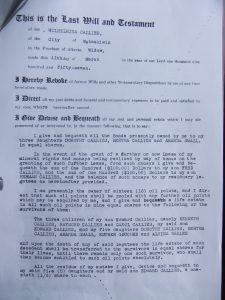
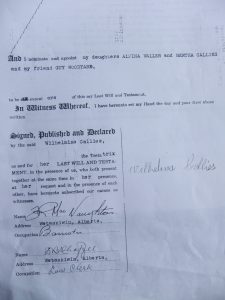
How Wilhelmina’s will allocated oil points on lands, originally owned by Carl, has been a matter of contention over the past years.
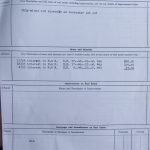
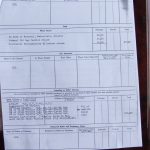
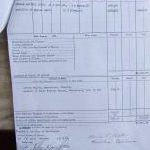
The more I read about my great Uncle Carl/Aunt Millie, and meet and talk with my Callies relatives the more I admire their accomplishments. It is with the greatest awe, respect and admiration that I have followed the growth of a young married couple and their young son from Iowa to the wilds of the Alberta Prairies East of Wetaskiwin. They experienced the ups and downs of life, accepting the good and bad as it came their way. I just wish I could have been there for some of their barn dances and celebrations!